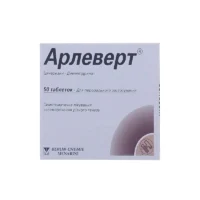Description
Neogabin 75 (Pregabalin) Capsules 75 mg. №30
Ingredients
- Each capsule contains 75 mg of pregabalin.
Dosage
- The recommended dosage is as directed by a healthcare provider.
Indications
- Neogabin 75 is indicated for the management of neuropathic pain associated with diabetic peripheral neuropathy, postherpetic neuralgia, and fibromyalgia.
Contraindications
- Do not use Neogabin 75 if you are allergic to pregabalin or any of the other ingredients in the capsules.
Directions
- Take Neogabin 75 capsules orally with or without food as directed by your healthcare provider.
Scientific Evidence
Pregabalin, the active ingredient in Neogabin 75, exerts its therapeutic effects by binding to the alpha2-delta subunit of voltage-gated calcium channels in the central nervous system. This binding reduces the release of neurotransmitters, including glutamate, norepinephrine, and substance P, thereby modulating pain signaling.
Several clinical trials have demonstrated the efficacy of pregabalin in the management of neuropathic pain conditions. A study by Rosenstock et al. (2004) showed significant pain reduction in patients with diabetic neuropathy treated with pregabalin compared to placebo.
Additional Information
- It is important to follow the prescribed dosage of Neogabin 75 to achieve optimal therapeutic benefits while minimizing the risk of adverse effects.
- Common side effects may include dizziness, drowsiness, and weight gain.
- Neogabin 75 should be stored at room temperature away from moisture and heat. Keep this medication out of reach of children and pets.
- Do not share Neogabin 75 with others, even if they have similar symptoms, as it may not be suitable for their condition.





